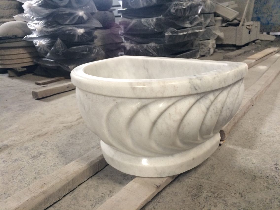If it wasn’t for the Romans and Greeks we probably all would still be bathing and showering in the cold. Because it was in fact the invention of the Roman Thermae or hot baths where many of our modern bathing traditions as well as the Hammam or Turkish steam bath find their origins. The Hammam is probably the oldest surviving bath tradition in the world. Its popularity has not faded over time. On the contrary. This ancient steam bath ritual has gained enthusiastic fans in every corner of the world.
HISTORY
Constantinople, better known as today’s Istanbul, was the capital of the Roman Byzantium. The Romans had ruled this area for several centuries but around 1450 the Ottomans conquered the city. The Turk Ottomans brought with them their own bathing traditions but encountered the Roman bath habits. They merged these with their own. And thus evolved a whole new cleansing ritual conform the requirements and rules of Islamic religion. The Turks called it Hammam, spreader of warmth.
The Romans believed in centralization of one huge bath complex where thousands of people could visit for their daily bathing routines and to catch up on the latest news. The Ottomans however merged their bathing traditions with their own cleanliness rules derived from Islam religion. They had always found custom in purification rituals before prayer and preferred smaller bath house scattered around the city. That is why Hammams are often found next to a mosque. Another difference is the cold water pool to fully submerge the body which you would find in any Roman bath house. The Turks perceived this habit to bathing in filth and preferred the tradition of running water from bowls to clean away the soap and grime. The Turkish tradition also required the cleansing ritual to finish in the cold room, which was a place for recovery. The Romans used this cold room as a a means of preparation to start their bathing journey.
At first the Hammam was strictly for men. Later women who had been ill or who had given birth were also allowed to visit the Hammam, but obviously never at the same hours. Over time all women were allowed to visit the Hammam. This could have been influenced by Mohammed who had voiced that the warmth of the baths would enhance fertility. On a social level many women considered it their daily escape from being isolated at home. A remarkable fact is that at some point in time a woman had legitimate reason to file for divorce if her husband prohibited her to visit the Hammam.
The Hammam was free to visit for all and this stimulated it to become an important social center for both women and men from all rankings and backgrounds. It evolved into much more than a place where you could cleanse your body. It was and still is in some villages not only a retreat for bodily and spiritual cleansing but also a place where important moments in life are celebrated by rejoicing at the bath, complete with food and music. Think of traditional purifactiion rituals before marriage, a newborns 40th day, circumcisions and other important milestones.
Like its Roman predecessor a typical Hammam has three interconnecting rooms.
Camekan
To start with, you enter the often impressive entrance hall, called the camekan or the warm room. Its function can be best compared to the locker room in a swimming pool. This is where you undress and get ready for the Hammam experience. Some Hammams have private wooden cubicles for a little more privacy. You will also receive a peştemal which is a special thin cloth to cover your body, and nalın, wooden slippers.
Hararet
Then the tellak or masseur will escort you to the main hot room or hararet. This room typically has a dome with small windows to create half-light. The göbek taşı, or belly stone, is a raised platform built entirely from Marble. The marble is warm and the room is hot and steamy. The tellak will tell you to lie down on the belly stone. You will soon start sweating and the pores of your skin will open up in anticipation of the great cleanse. After a while the tellak will come in and massage and wash you vigorously with a traditional soap with olive paste and often a thin cloth. The suds and dead skin cells are washed away with bowls of clean water.
Soğukluk
At this point you move to the side of the room where the water basins are . You will now receive an intensive scrub with a rough mitten called a kese. Another extensive rinse follows after which you’re ready to towel dry and enter the soğukluk, or cool room, where you will receive a drink and where you can lie down on a bed to relax a little more.
If you ever find yourself in the vicinity of an authentic Hammam in the far East, do yourself a favor and give it a try. It is extremely relaxing and at the same time you will feel incredibly invigorated afterwards. And did we mention your skin? It will feel as soft as a newborn’s bottom. We’d love to hear you personal experience with the ritual of Hammam, so if you ever had the pleasure of visiting a Maroccan or Turkish steam bath, please drop us a line!

http://www.enjoythemomentrituals.com/history-of-hammam/
Contact: Mr.Jack Chan
Phone: 008617750596097
Tel: 00865927616505
Email: info@ganistone.com
Add: #A1411, NO.802 Yuanshan South Road, Huli, Xiamen, China (361006)